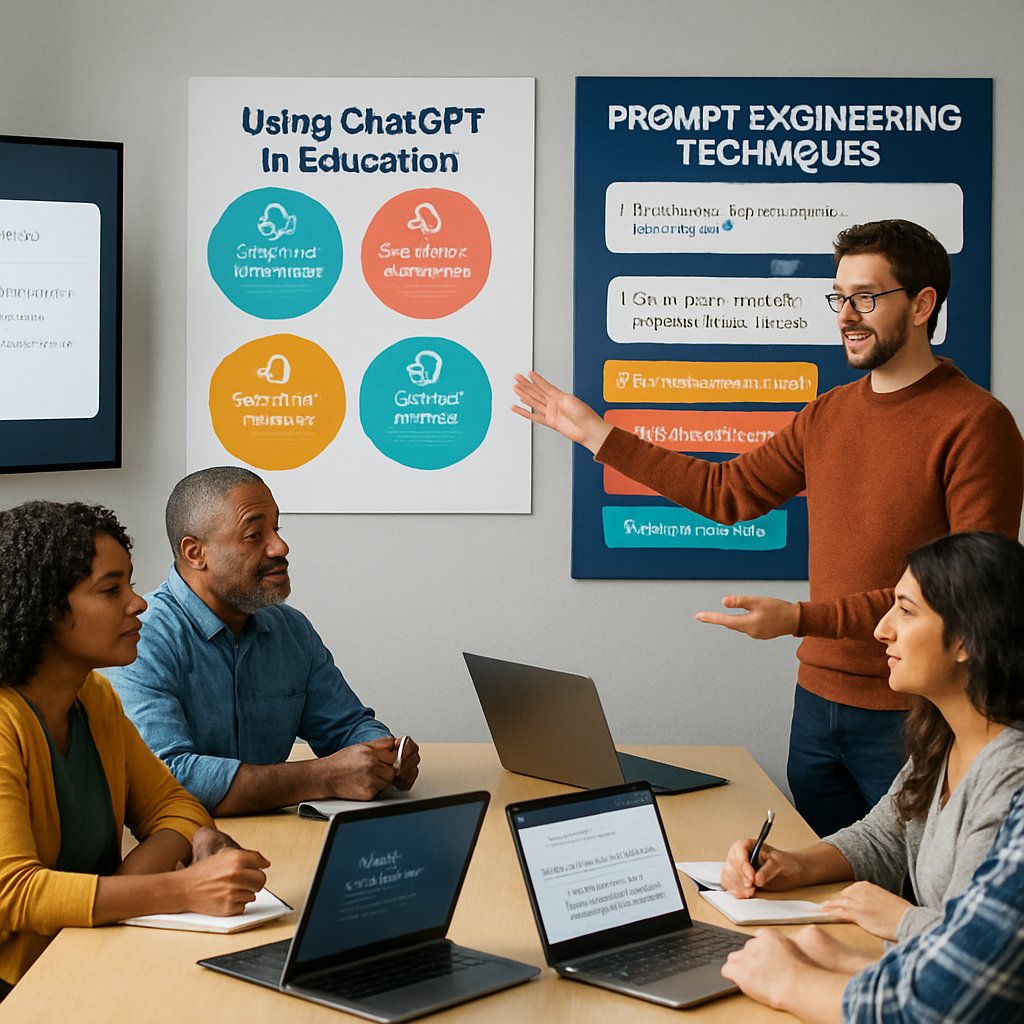Unlocking the Classroom Potential: How Prompt Engineering Transformed Teachers' Views on ChatGPT
Artificial Intelligence (AI) is reshaping education faster than you can say “ChatGPT”! As more educators explore the possibilities of AI in their classrooms, a fascinating study sheds light on how teachers’ perceptions of ChatGPT, an advanced AI tool, can dramatically change when they learn the art of prompt engineering. Let’s dive into the exciting findings from Dimitrios Gousopoulos’s research and explore how this transformative technology can enhance learning experiences.
The Magic of Prompt Engineering
So, what’s all this buzz about prompt engineering? In simple terms, it’s the craft of communicating with AI in a way that produces the best possible responses. Think of it like teaching a new pet. The better you are at training it to respond to commands, the smarter and more useful it becomes! For educators, this means crafting their requests to ChatGPT so they can pull out the most relevant, detailed, and engaging answers, enhancing their overall teaching effectiveness.
In an era where AI can replicate human-like conversation and aid in learning processes, having the right prompting technique can be a game changer. Gousopoulos set out to explore whether training secondary education science teachers in these crucial prompting techniques would positively impact their attitudes towards using ChatGPT as an instructional assistant.
A Peek into the Research
During this pilot study, Gousopoulos worked with 14 science teachers from both public and private schools. The mission? To determine if these teachers would change their views on AI as a teaching aid after learning prompt engineering.
Here’s how they rolled it out:
- The participants were surveyed before and after a three-week training session that focused on different techniques for engaging with ChatGPT.
- They received training that covered methodologies and specific strategies that included the Persona Pattern and Chain-of-Thought prompts.
Once the sessions concluded, teachers answered the same questionnaire to measure any shift in perception. The results were illuminating!
Results Worth Celebrating!
The analysis revealed something remarkable – after the training, the teachers’ understanding of AI's potential in education grew, leading to a more favorable attitude towards ChatGPT’s capabilities as a helpful educational assistant. Statistically speaking, there was a significant positive change, reinforcing the idea that well-structured training could enhance how educators perceive and utilize AI in classrooms.
The Benefits of ChatGPT in Education
So, why the sudden interest in using ChatGPT in classrooms? Here are a few reasons that might inspire educators to embrace this technology:
1. Personalized Learning
ChatGPT can tailor its responses based on student needs, helping to create a customized learning experience. Imagine having a personal tutor available 24/7 who can explain complex concepts until they’re crystal clear!
2. Enhanced Engagement
Generating interactive dialogues can captivate students and boost their motivation to learn. With ChatGPT, lessons can become lively and engaging, encouraging students to dive deeper into subjects like physics and math.
3. Support for Differentiated Instruction
Alphabet soup of teaching methods can be addressed! Through prompt engineering, educators can craft specific exercises suitable for diverse learning levels, ensuring no student lags behind.
4. Efficient Lesson Planning
ChatGPT can help teachers save time. From creating lesson plans to generating assessment tools, AI can shoulder some of the repetitive tasks, allowing educators to focus on what they do best: teaching!
5. Boosting Confidence and Reducing Anxiety
When students receive instant answers to their queries from ChatGPT, it fosters a secure learning environment, reducing their learning anxiety and boosting confidence as they navigate challenging topics.
Navigating the Challenges
Like every shiny new tool, AI has its drawbacks. Gousopoulos’s research also highlights potential hurdles educators must navigate when implementing ChatGPT:
- Limited Complexity Handling: Sometimes, ChatGPT struggles with intricate topics, particularly in higher-level subjects.
- No Visual Support: Unlike traditional teaching methods, AI lacks the visual aids that often enhance understanding.
- Quality Control: All responses from AI need to be checked for accuracy. After all, teachers remain the frontline defenders of educational integrity!
Final Thoughts and Practical Applications
As Gousopoulos's study illustrates, educating teachers in prompt engineering is a key to unlocking the vast potential of ChatGPT in classrooms. By refining how educators interact with AI, we can enhance learning experiences and catalyze a shift in perceptions towards embracing new technologies.
Key Takeaways
- Prompt Engineering is Key: Learning to communicate effectively with AI tools like ChatGPT can lead educators to better understand and appreciate the capabilities of these technologies as instructional aids.
- Transformative Learning Experiences: ChatGPT offers individualized learning, enhanced engagement, and streamlined lesson planning, making it a valuable asset in any classroom.
- Mind the Limitations: While AI can be incredibly helpful, it’s essential for educators to be aware of its limitations and verify information provided by AI.
- Encouraging Open-Mindedness: Training in AI interactions can foster a more positive attitude among teachers, ultimately integrating advanced technology into traditional teaching methods seamlessly.
- Work Together: AI is not here to replace educators but to support them. A blend of human insight and AI assistance can create powerful learning experiences for students.
In summary, as education evolves alongside technology, embracing AI like ChatGPT with proper training can revolutionize the learning landscape, enabling teachers to provide more effective, engaging, and personalized experiences for their students. Are you ready to transform your classroom with AI? The future is bright!

